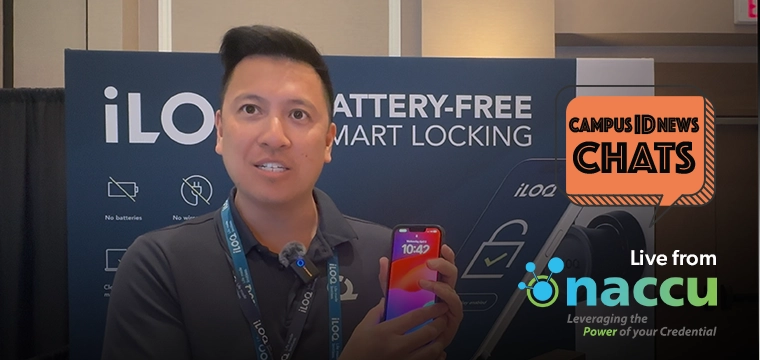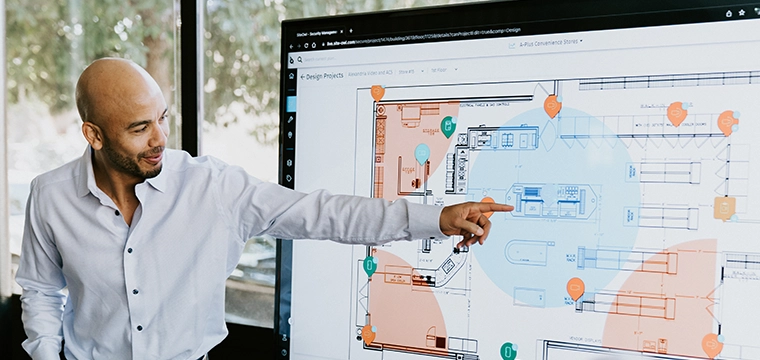Are they still popular, important?
It has been nearly a decade since the first campus cards with bank partnerships were issued. Throughout the 1990s, this combination that to many seemed a panacea would be pursued by campuses across the country. The list of financial institutions partnering with campus card programs includes some of the largest international, regional and super-regional banks–as well as many community banks and credit unions.
At the close of the decade, however, it seemed that the focus on bank partnerships had lessened. The volume of discussion, the list of actively interested financial institutions, and the number of RFPs for the partnerships all seemed to be dwindling. If this is true, why is it happening? Have campuses found the services unnecessary? Have the banks found them unprofitable? Or have the overall market conditions made it less attractive for anyone–campus or bank–to take chances?
The beginnings …
From the start, a partnership between the campus card and the financial world held the promise of improved service to cardholders, significant administrative savings, and exciting new revenue opportunities. The initial goals from the campus perspective remain much the same today: Utilize the established expertise, processes, and infrastructures of the banking industry to facilitate payments from student to campus, campus to student, and student to merchant. Progressive financial institutions came to view these programs as a means to gain accounts in mass, rather than through traditional one-by-one efforts.
This all sounded great, but, as many institutions learned, the difference between their desire for this service and the financial communities’ desire or ability to deliver were often miles apart. Add to this a steep learning curve on both sides of the table and it is little surprise that the number of institutions with bank and ID card partnerships still is estimated at less than one hundred.
Pro-Bank vs. No-bank …
There are two sides to most stories and this is certainly one of them. As vehemently as some have promoted the utilization of banking partnerships, others have dismissed them. Unfortunately for the campus administrator, the side being argued is likely due less to campus’ needs than to the vendor’s product offering. In the most basic sense, a bank relationship hinders the sale of an on-line system but it helps the sale of an off-line system. Put another way, an on-line system can accomplish on its own, much of the administrative functionality that one seeks from a bank partnership. For off-line systems, this is much less true. Though there are numerous examples of successful on-line systems with banks and off-line systems without them, they are theexceptions.
To further explain this point lets examine the following theoretical sales pitches from an on-line vendor and an off-line vendor trying to sway a campus card administrator.
On-line system provider:
“With our on-line database you have real-time account balances for every cardholder at all times. Each point of sale reader at the vending machine or merchant talks to that database to make sure the cardholder has sufficient balance to make the transaction. It works just like a debit card from a bank only you keep control of the account. With a bank, your students can spend the money anywhere–that may be great for them but it is not so good for you, your on-campus merchants, or the parents.”
Off-line system provider:
“Your students will only put money into your card program if they can spend it as they choose. The days of forcing them to eat every meal in your cafeterias are gone. With a bank relationship, everybody wins. The students get the flexibility they want, the bank gets customers, you get a revenue share and best of all a great level of service without having to run massive database servers. Plus, at some point the Feds are going to come in and put a stop to these campuses that act like banks but don’t follow any of the Reg E, FDIC, or other rules.”
Who is right? Who is wrong? The answer is that they both are right … and wrong.
Pro and con, the bank’s perspective …
“Student accounts are a money loser for the bank.” This is perhaps the most common statement from a banker when it comes to campus programs. Whether or not this is true is difficult for any of us to know for sure. Privately, bankers have suggested that this is really not the case. When a campus is negotiating revenue share, however, it is obviously more advantageous to underestimate revenues than to boast of them.
Still it seems an almost universal statement so it is likely borne in truth. Those financial institutions that have chosen to actively pursue the market have done so based on the future benefits. The theory is that if the bank provides good service the student is likely to continue the account relationship post graduation. At that point, the bank can recoup its investment via more lucrative services such as loans, mortgages, credit cards, and a lifelong client relationship. There is a caveat to this however, a bank will only find this proposition attractive if the majority of student cardholders are likely to stay within the banks service area.
Attracting a bank if you want one …
So how can you best position your card program if you want to attract a financial institution’s interest? Become a salesperson for your program. Know your facts. Try to understand the motivations of the bankers with whom you will meet. Here are some specific things to consider:
What percentage of graduates will settle within the local area? If this number is high than you may be an attractive candidate for a local bank. If it is low a local bank would see little opportunity to recoup the investment through lifelong customer relationships. If the bulk of your students leave the area upon graduation, a super-regional or international bank may be better suited. The key is to understand the footprint of the bank (the geographic area of its branch network) and the patterns of your graduates.
Be realistic with your financial expectations. These relationships are not going to fund your program. While they may provide some modest revenue sharing, this should be viewed only as an ancillary benefit should it materialize. Often fees assessed to the campus exceed the share resulting in a net cost to the campus. Such programs should be pursued for the student service and administrative savings aspects. To put in terms we all can understand–if they sense you are only interested in their money, they won’t call you after the first date.
Evaluate how a student will conduct business with the bank and make sure the infrastructure will be there to support it. For a time it was thought that the bank had to put a branch on the campus for the program to succeed. While this certainly is a huge asset, it is impractical in most cases. The initial costs are large as a functioning branch requires a prime location and a substantial build-out including high-level security systems and the installation of a vault. Ongoing costs associated with staffing and support are sizeable as well. Because of this, on-campus branches are the exception rather than the rule.
Some campuses have relied on an existing branch located close to the campus. Others have been forced to accept full-service ATMs as a stand-in for the branch. A number of financial institutions have deployed either staffed or fully-automated self-service centers. These centers can provide many of the services of a branch with the exception of handling cash (other than via the ATM). This excludes them from the requirement to install the expensive vault at the location. The key is to make sure that you know how your students will conduct business with the bank and ensure that adequate infrastructure is in place. If it is less convenient for your students to bank with your partner than with another bank, they won’t do it.
If you are anticipating the use of your card as a payment vehicle at merchants in the community, you must understand the ability of the bank to support this function. Take note of a financial institution’s existing merchant base and their realistic plans for expansion. Also, investigate the nature of these merchants and make certain that they include or will include those that service your students.
Consider embedding the request forcard-based financial services with your institution’s request for depository relationship services. The value of a longterm relationship with the cardholder is significantly enhanced by the association of an immediate and proven revenue opportunity for the bank.
What have we learned?
In the decade since the pioneering card programs first added bank partnerships, a great deal has been learned. What once was as foreign a concept to the banking industry as it was to the higher education community, has by some been embraced and taken to new heights.
That is not to say that the process has become an easy one, by all accounts it has not. A great deal of commitment, cooperation and vision is required to accomplish the task of providing an ID card with true financial services. The rewards for a program well done will certainly be well deserved.
Yet, time continues to show that banking relationships are not mandatory. The majority of campuses operate their programs without these relationships. The growth of on-line, campus-controlled debit accounts continues and the well-run programs continue to prosper.
At the outset of this article the question was posed, “Why does the focus on banking partnerships seem to be lessening?” It seems that the answer likely has a number of factors. It is true that many have found the banking services to be unnecessary or even undesirable. Too, many banks have found–or been led to beleive–them unprofitable. And yes, certainly a changing tide of market conditions have likely made it less attractive for both campuses and banks to take chances on new ventures.
The lesson seems to be that each campus is different and each environment unique. Only by fully understanding the needs of your cardholders and the motivations of potential banking partners can you make an adequate pro-bank or no-bank decision.




